
Rural flight is the migratory pattern of people from rural areas into urban areas. It is urbanization seen from the rural perspective.

Campinas is a Brazilian municipality in São Paulo State, part of the country's Southeast Region. According to the 2020 estimate, the city's population is 1,139,047, making it the fourteenth most populous Brazilian city and the third most populous municipality in São Paulo state, and the largest city in Brazil outside the metro region of a state capital. The city's metropolitan area, Metropolitan Region of Campinas, contains twenty municipalities with a total population of 3,656,363 people.

The State University of Campinas, commonly called Unicamp, is a public research university in the state of São Paulo, Brazil.

Marabá is a municipality in the state of Pará, Brazil. Its greatest geographic reference is the confluence of two large rivers near the historic city center, the Itacaiunas River and the Tocantins River, forming a "Y" if seen from space. It basically consists of six urban centers linked by five highways.
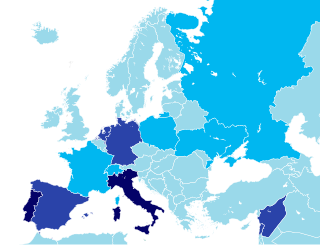
Immigration to Brazil is the movement to Brazil of foreign peoples to reside permanently. It should not be confused with the forcible bringing of people from Africa as slaves. Latin Europe accounted for four-fifths of the arrivals. This engendered a strikingly multicultural society. Yet over a few generations, Brazil absorbed these new populations in a manner that resembles the experience of the rest of the New World.

Manicoré is a municipality located in the south-east of the Brazilian state of Amazonas.

In the context of the 20th-century history of the United States, the Second Great Migration was the migration of more than 5 million African Americans from the South to the Northeast, Midwest and West. It began in 1940, through World War II, and lasted until 1970. It was much larger and of a different character than the first Great Migration (1916–1940), where the migrants were mainly rural farmers from the South and only came to the Northeast and Midwest.
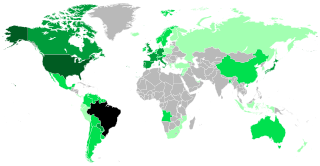
Brazilians are the citizens of Brazil. A Brazilian can also be a person born abroad to a Brazilian parent or legal guardian as well as a person who acquired Brazilian citizenship. Brazil is a multiethnic society, which means that it is home to people of many ethnic origins, and there is no correlation between one's stock and their Brazilian identity.
There is a significant community of Brazilians in Japan, consisting largely but not exclusively of Brazilians of Japanese descent. Brazilians with Japanese descent are known as Nikkei Brazilians. They constitute the largest number of native Portuguese speakers in Asia, greater than those of formerly Portuguese East Timor, Macao and Goa combined. Likewise, Brazil maintains its status as home to the largest Japanese community outside Japan.
Internal migration in the People's Republic of China is one of the most extensive in the world according to the International Labour Organization. This is because migrants in China are commonly members of a floating population, which refers primarily to migrants in China without local household registration status through the Chinese Hukou system. In general, rural-urban migrant most excluded from local educational resources, citywide social welfare programs and many jobs because of their lack of hukou status. Migrant workers are not necessarily rural workers; they can simply be people living in urban areas with rural household registration.
Internal migration or domestic migration is human migration within a country. Internal migration tends to be travel for education and for economic improvement or because of a natural disaster or civil disturbance, though a study based on the full formal economy of the United States found that the median post-move rise in income was only 1%.

Brazilian society is made up of a confluence of people of Indigenous, Portuguese, and African descent. Other major significant groups include Italians, Spaniards, Germans, Lebanese, and Japanese.

Brazil had an official resident population of 203 million in 2022, according to IBGE. Brazil is the seventh most populous country in the world, and the second most populous in the Americas and Western Hemisphere.
Chinese people in Portugal form the country's largest Asian community, and the twelfth-largest foreign community overall. Despite forming only a small part of the overseas Chinese population in Europe, the Chinese community in Portugal is one of the continent's oldest due to the country's colonial and trade history with Macau dating back to the 16th century. There are about 30,000 people of Chinese descent residing in Portugal
European immigration to Brazil refers to the movement of European people to Brazil. It should not be confused with the colonisation of the country by the Portuguese.
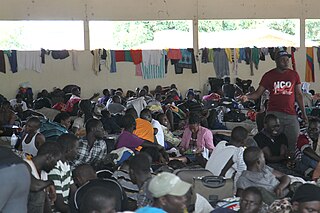
A Haitian Brazilian is a Brazilian person of full, partial, or predominantly Haitian ancestry, or a Haitian-born person residing in Brazil.

The history of Manaus, with over 350 years of existence, coincides with the history of Brazil. The process of European occupation began in the middle of the 16th century, when explorer Francisco de Orellana arrived from Peru and intended to go to Spain.
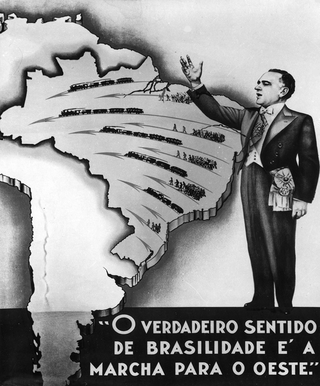
The March to the West was a public policy engendered by the government of Getúlio Vargas during the Estado Novo (1937–1945) in order to develop and integrate the Center-West and North regions of Brazil, which until that moment had a low population density, quite different from what occurred in the Brazilian coastal region. At the beginning of the 1940s, practically all of the country's 43 million inhabitants were concentrated along the coast and saw the interior of their own country as something exotic. The region was nothing more than a huge and unexplored spot in Brazilian geography.
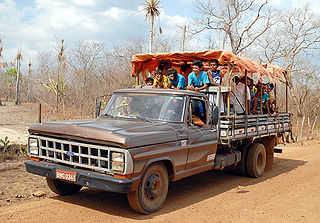
Northeastern migration or the northeastern exodus refers to a secular migratory process of populations coming from the Northeast region of Brazil to other parts of the country, in particular to the center-south. This migratory movement had and has great relevance in the history of migration in Brazil since the time of the Empire.
Danish immigration to Brazil was at its highest at the end of the 19th century and the beginning of the 20th century, together with other European migrations. Brazil was the country to receive the second largest number of Danes in Latin America, second to Argentina. As an unofficial migration, the numbers may vary. It is estimated that around 5,000 Danes entered Brazil from 1864, after the Second Schleswig War, until the First World War.
















